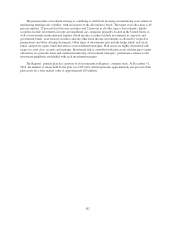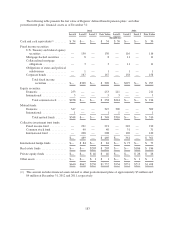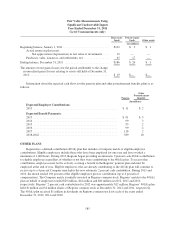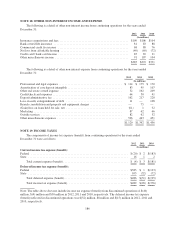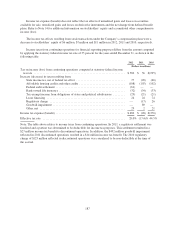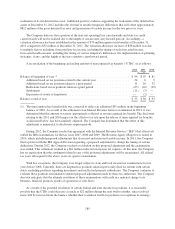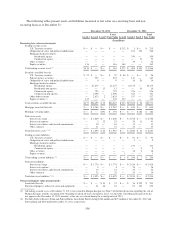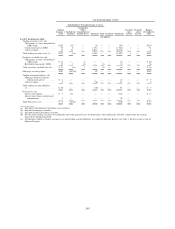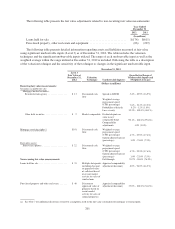Regions Bank 2012 Annual Report Download - page 207
Download and view the complete annual report
Please find page 207 of the 2012 Regions Bank annual report below. You can navigate through the pages in the report by either clicking on the pages listed below, or by using the keyword search tool below to find specific information within the annual report.HEDGING DERIVATIVES
Derivatives entered into to manage interest rate risk and facilitate asset/liability management strategies are
designated as hedging derivatives. Derivative financial instruments that qualify in a hedging relationship are classified,
based on the exposure being hedged, as either fair value hedges or cash flow hedges. The Company formally
documents all hedging relationships between hedging instruments and hedged items, as well as its risk management
objective and strategy for entering into various hedge transactions. The Company performs periodic assessments to
determine whether the hedging relationship has been highly effective in offsetting changes in fair values or cash flows
of hedged items and whether the relationship is expected to continue to be highly effective in the future.
When a hedge is terminated or hedge accounting is discontinued because the hedged item no longer meets
the definition of a firm commitment, or because it is probable that the forecasted transaction will not occur by the
end of the specified time period, the derivative will continue to be recorded in the consolidated balance sheets at
its fair value, with changes in fair value recognized currently in investment fee income. Any asset or liability that
was recorded pursuant to recognition of the firm commitment is removed from the consolidated balance sheets
and recognized currently in other non-interest expense. Gains and losses that were accumulated in accumulated
other comprehensive income (loss) pursuant to the hedge of a forecasted transaction are recognized immediately
in other non-interest expense.
FAIR VALUE HEDGES
Fair value hedge relationships mitigate exposure to the change in fair value of an asset, liability or firm
commitment. Under the fair value hedging model, gains or losses attributable to the change in fair value of the
derivative instrument, as well as the gains and losses attributable to the change in fair value of the hedged item,
are recognized in earnings in the period in which the change in fair value occurs. The corresponding adjustment
to the hedged asset or liability is included in the basis of the hedged item, while the corresponding change in the
fair value of the derivative instrument is recorded as an adjustment to other assets or other liabilities, as
applicable. Hedge ineffectiveness exists to the extent the changes in fair value of the derivative do not offset the
changes in fair value of the hedged item and is recorded as other non-interest expense.
Regions enters into interest rate swap agreements to manage interest rate exposure on the Company’s fixed-
rate borrowings, which includes long-term debt and certificates of deposit. These agreements involve the receipt
of fixed-rate amounts in exchange for floating-rate interest payments over the life of the agreements. Regions
also enters into forward sale commitments to hedge changes in the fair value of available-for-sale securities.
CASH FLOW HEDGES
Cash flow hedge relationships mitigate exposure to the variability of future cash flows or other forecasted
transactions. For cash flow hedge relationships, the effective portion of the gain or loss related to the derivative
instrument is recognized as a component of accumulated other comprehensive income (loss). Ineffectiveness is
measured by comparing the change in fair value of the respective derivative instrument and the change in fair
value of a “perfectly effective” hypothetical derivative instrument. Ineffectiveness will be recognized in earnings
only if it results from an over hedge. The ineffective portion of the gain or loss related to the derivative
instrument, if any, is recognized in earnings as other non-interest expense during the period of change. Amounts
recorded in accumulated other comprehensive income (loss) are recognized in earnings in the periods during
which the hedged item impacts earnings.
Regions enters into interest rate swap agreements to manage overall cash flow changes related to interest
rate risk exposure on LIBOR-based loans. The agreements effectively modify the Company’s exposure to interest
rate risk by utilizing receive fixed/pay LIBOR interest rate swaps.
Regions issues long-term fixed-rate debt for various funding needs. Regions enters into receive LIBOR/pay
fixed forward starting swaps to hedge risks of changes in the projected quarterly interest payments attributable to
changes in the benchmark interest rate (“LIBOR”) during the time leading up to the probable issuance date of the
new long term fixed-rate debt.
191



